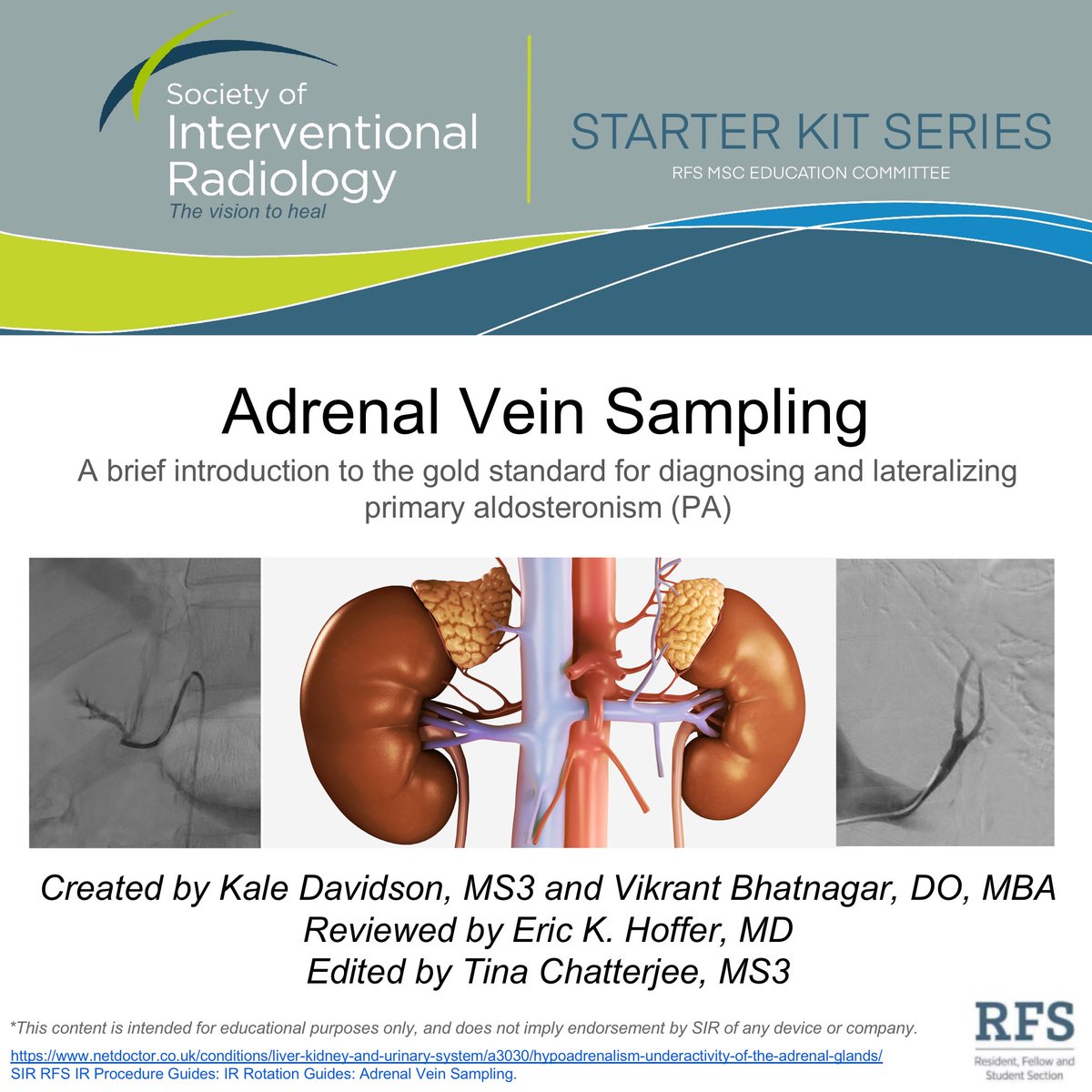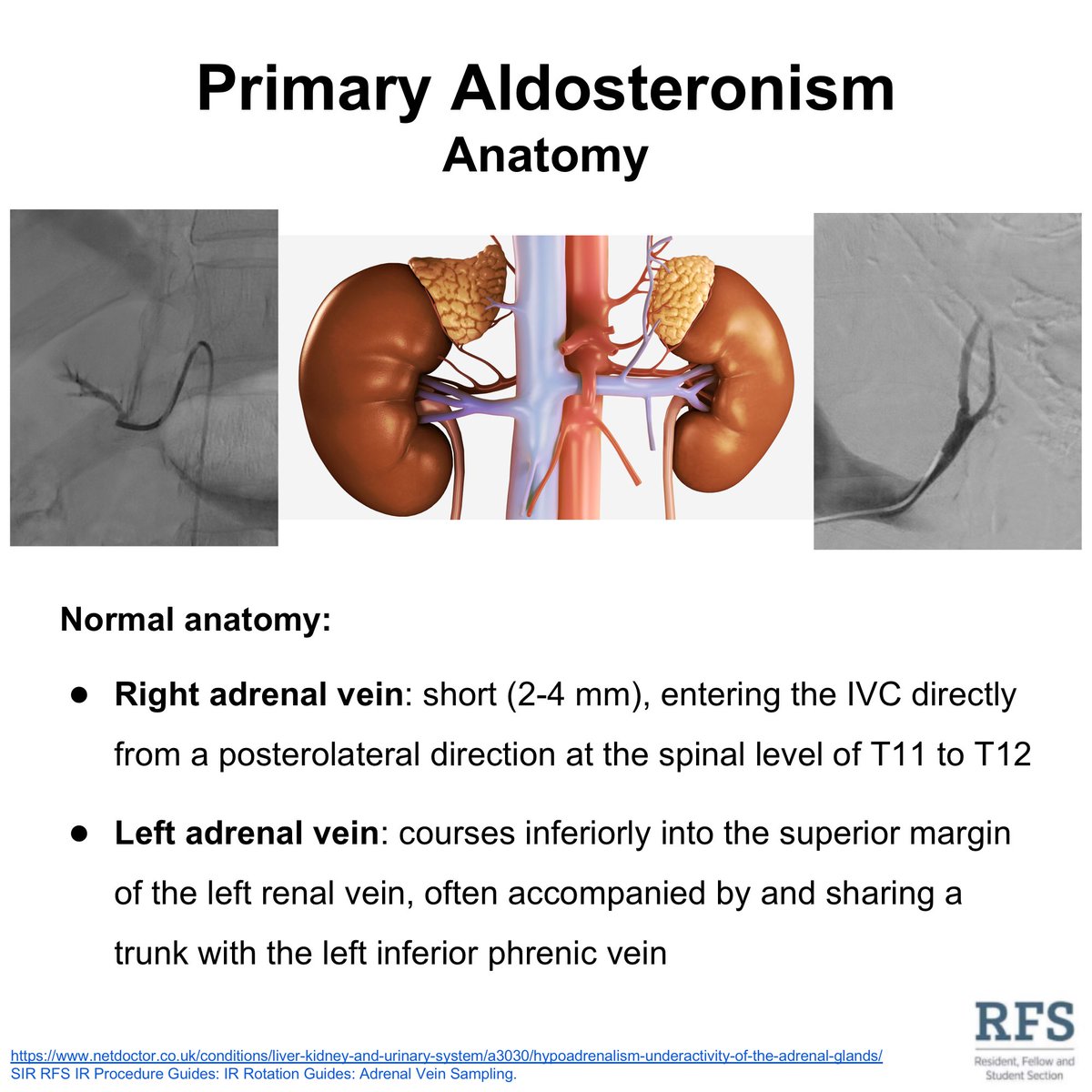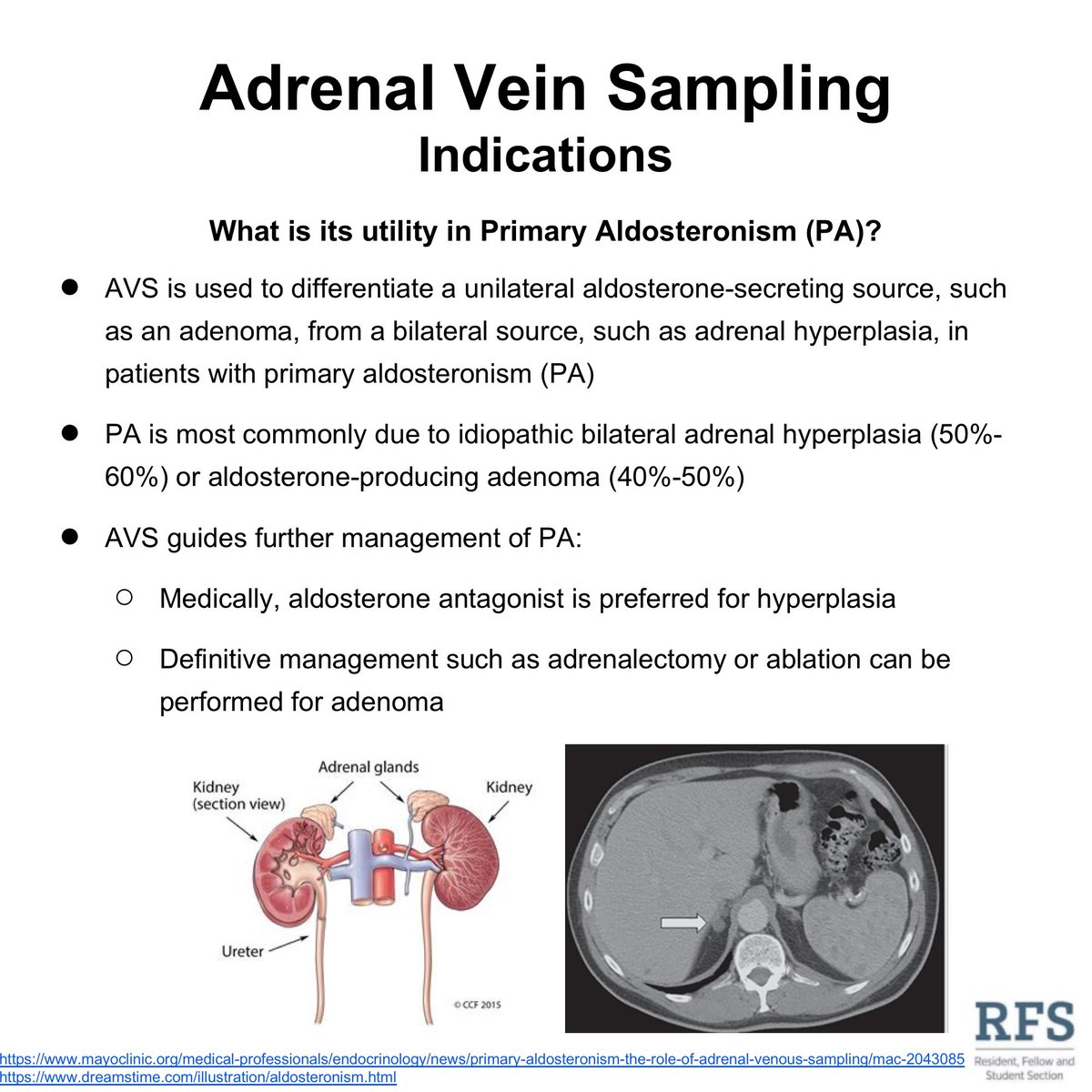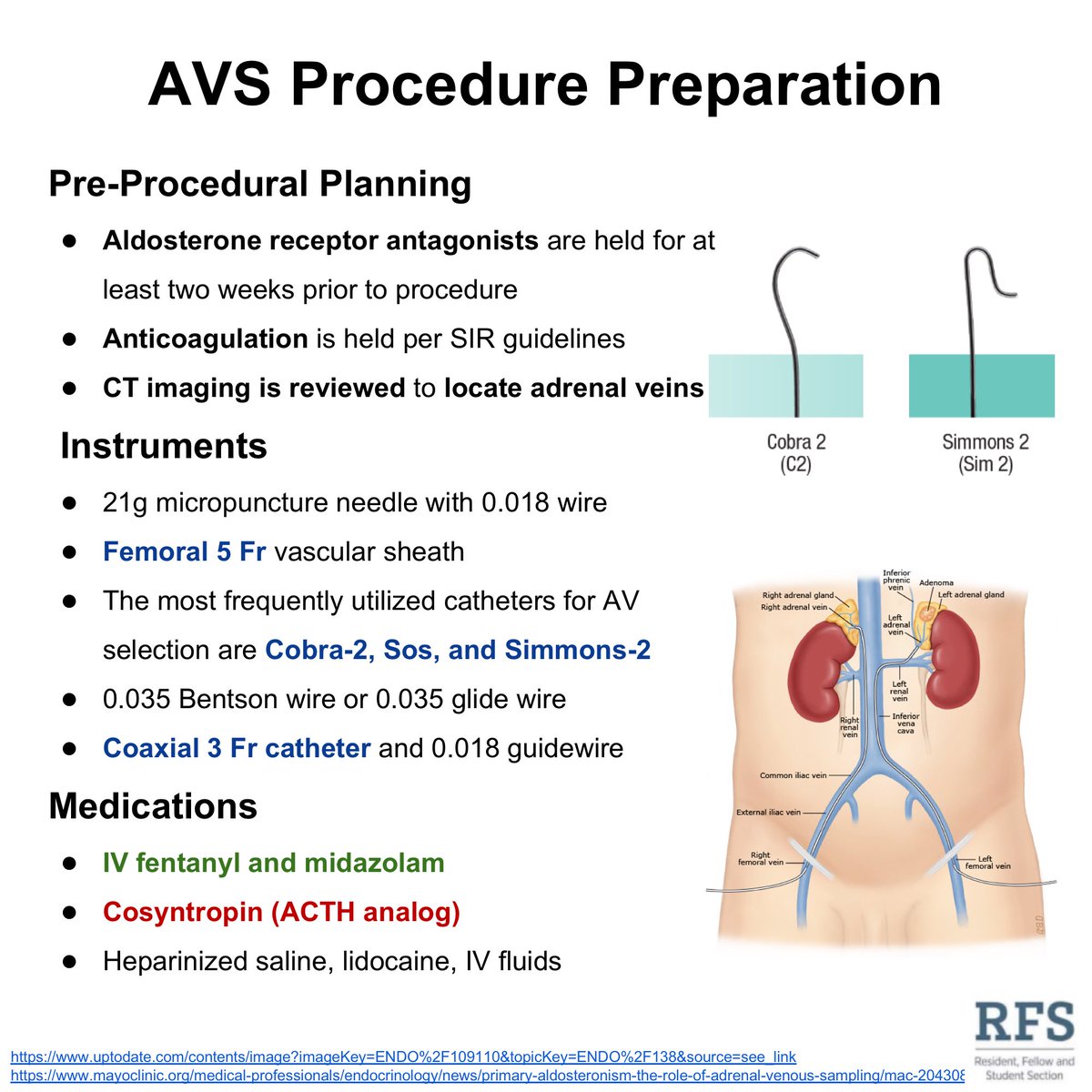A brief introduction to Adrenal Vein Sampling, the gold standard for diagnosing & lateralizing primary aldosteronism (PA) #irad
Authors: Kale Davidson ( @Kale_Davidson_) & Vikrant Bhatnagar, DO ( @IRVikBhatnagar)
Reviewer: Eric K. Hoffer, MD
Education Liaison: @tinachatterje3
Authors: Kale Davidson ( @Kale_Davidson_) & Vikrant Bhatnagar, DO ( @IRVikBhatnagar)
Reviewer: Eric K. Hoffer, MD
Education Liaison: @tinachatterje3
The right adrenal vein enters the IVC directly at the level of T11-T12. Meanwhile, the left adrenal vein shares a trunk with the left inferior phrenic vein branching off of the left renal vein.
PA is most commonly due to idiopathic bilateral adrenal hyperplasia (50%-60%) or aldosterone-producing adenoma (40%-50%). AVS is is used to differentiate a bilateral source (idiopathic hyperplasia) from a unilateral source (adenoma).
The most frequently used catheters for adrenal vein selection include the Cobra-2, Sos, and Simmons-2 catheters.
The more technically challenging right adrenal vein is accessed and sampled first. Gentle diagnostic venogram and sampling should be performed to avoid vein rupture or collapse.
Next, the left adrenal vein is accessed for sampling. The catheter should be rotated along the posterior IVC wall to the left renal vein. After which, the catheter can be directed superiorly to engage the left adrenal vein.
Patients can be sent home the day of the procedure and should follow up with their endocrinologist for test results.
The greater aldosterone:cortisol ratio is divided by the lesser to determine a Lateralization Index. A Lateralization Index of <2:1 indicates a bilateral source while an index >4:1 indicates a unilateral source.

 Read on Twitter
Read on Twitter











